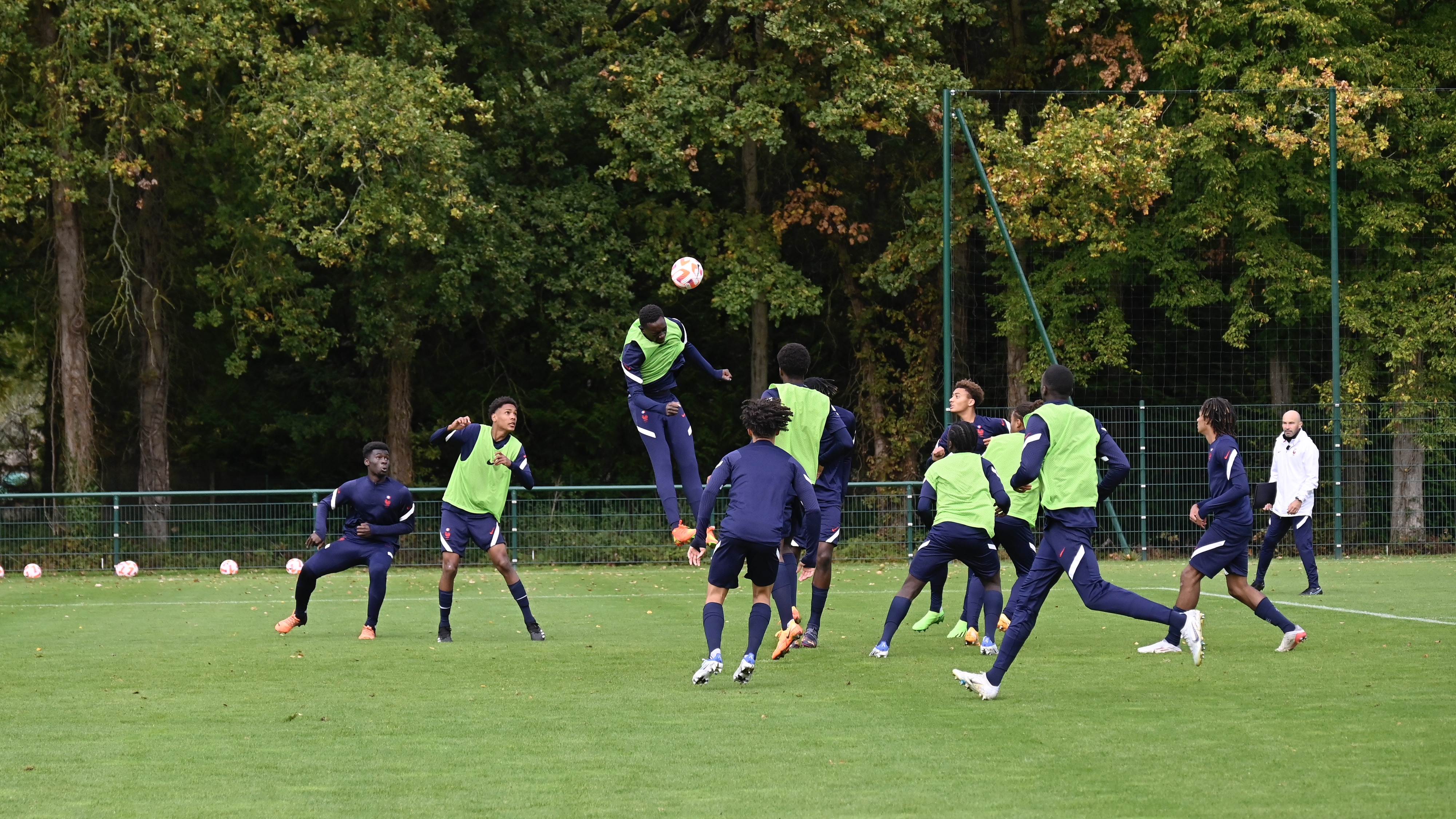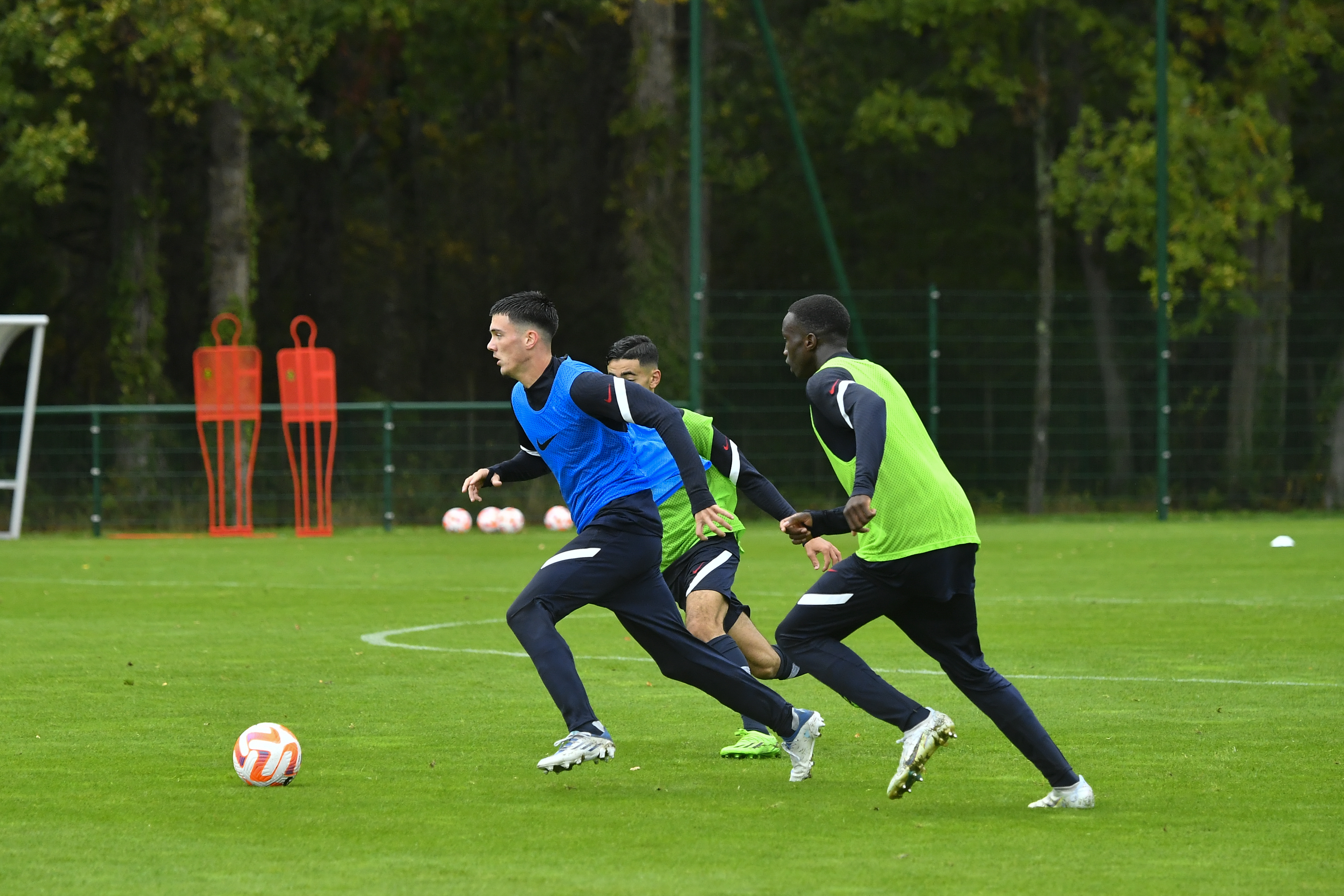Having conceded just once in the tournament to date, France have proved to be the hardest defence to break down. They defend in numbers and counter-attack at speed, but face a Germany side that has scored 16 goals enroute to the final.
In possession: Threat from attacking corners
Of the ten goals that France have scored to date in the competition, four have come from set plays (two corners, one wide free kick and one direct free kick). A team’s ability to score from set plays can be particularly important in tight matches, and having variety of routines makes it difficult for the opposition to defend.
Pape Thiaw, one of the TSG members in Indonesia, has admired France’s focus and application when taking attacking corners.
“They have tall players who are strong in the air and have players that can score from distance, but what has impressed me most is the attention and focus of the team. Young players can lose concentration, but France have clearly worked hard on these routines and the players know their roles in different situations very well. Their focus and execution of the routines has been very impressive.”
The variety and effectiveness of France’s attacking corners caught the eye of the TSG, with 19% of their total attempts at goal in the tournament coming during attacking corner phases (more than any other semi-finalist). Strikingly, France have generated an attempt at goal in 45% of their corners in this tournament with a total of 16 attempts, seven of which were short corners or corners to the edge of the penalty area.
Les Bleuets vary their routines also, delivering 45% of corners directly into the penalty area and playing the remaining 55% short or to the edge of the box. As we see in the clips below, both of France’s goals from corners came from short or edge-of-the-area routines.
Out of possession: Defending the penalty area
Having only conceded one goal in their six tournament matches, France boast the meanest defence in the competition – a testament to their diligent and collective approach when without the ball.
According to TSG member Julio González, “France work very hard collectively to win the ball back and counter-attack. The connection between their players is strong and they all contribute to the team’s defensive work. They defend in numbers and when attacking they maintain a balanced rest defence and always have numbers available to defend should they lose the ball.”
“The numbers tell us everything we need to know about France. Their timing for defensive interventions is very good and they perform them with controlled aggression and power. The relationship between the two centre-backs and their defensive midfielder is very important in how they defend, but the wingers and forwards also come back to make sure they contribute to the defensive work.
“In the clips below we see how the defenders and centre-midfielder work together and how proactive they are when defending in the final third. In clip 4, we see how the right-back makes his recovery run into the space vacated by his centre-back when he is drawn out of position into a 1v1 defensive situation. The defensive midfielder Amougou also covers the space on the inside and steps into the challenge when the opportunity arises.”
Goalkeeper: Paul Argney
Having kept four clean sheets in France’s six games enroute to the final, goalkeeper Paul Argney (1) has made a significant contribution to his team’s progress in the competition. The 17-year-old, who is signed with Le Havre AC, has been impressive in his shot-stopping, according to Pascal Zuberbühler.
“Argney has made some crucial saves in this tournament. He is explosive in his movements and is very agile and we see these qualities in the clips below. In the first one against Uzbekistan, he makes an excellent reaction save low to his right. As the cross is delivered, he adjusts his feet and is then perfectly set to deal with the attempt at goal. The ball is headed down, so he is very sharp in his reaction and is very explosive in his ability to get down so quickly and save with his right hand.
“In clip 6 against Mali, he is brave and shows great conviction with his first two steps towards the attacker, which are crucial. His decision to advance closes the space available for the attempt at goal and facilitates his ability to get a vital touch on the ball to deny a big goal-scoring opportunity. This was a very impressive save from the young goalkeeper,” he added.
The final of the FIFA U-17 World Cup between Germany and France takes place in the Manahan Stadium in Surakarta, on Saturday 2nd December with a 19:00 kick-off (local time).























